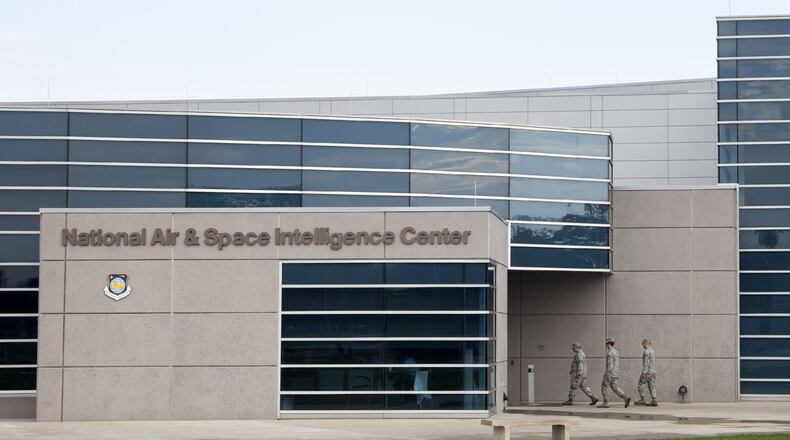Michael Gessel, Dayton Development Coalition vice president of federal programs, said construction of the new complex could be sped up and the amount of spending on the project outpaced Wright-Patterson construction by a wide margin in recent years.
“To put it in perspective, this building would receive more military construction funding than Wright-Patterson received in military construction funding in the last nine years,” he said.
House Armed Services Committee member and U.S. Rep. Mike Turner, R-Dayton, called it a “big win” for the base “which gives us the assurance this is a project that will go forward.”
Turner said in an interview Thursday he pushed to have the expansion authorized sooner for the four-year project.
The intelligence agency analyzes adversaries air, space, and cyber threats, such as ballistic missile capabilities, and provides findings to the nation’s political and military leaders.
RELATED: Wright-Patt would gain new NASIC building in proposed budget
NASIC has pressed the need for the new space to relieve overcrowding, said agency spokeswoman Michelle Martz.
The size of the new building will “certainly put a dent in that problem,” she said.
As national decision makers and others have demanded more intelligence, NASIC’s workforce has increased by about 1,500 employees, or 100 a year between 2000 to 2015, according to the agency.
The building would bring employees in six different locations into one facility. An expansion would add 900 seats to house intelligence analysts and engineers and add labs.
NASIC expects the Army Corps of Engineers to award a final contact by 2020 with a two-and-half year construction schedule. Total funding in future years will determine the size of the expansion, however the Air Force has said NASIC has a deficit of 255,000-square-feet, she said.
The House Armed Services Committee passed the provision as part of a $717 billion fiscal year 2019 National Defense Authorization Act, which must still receive congressional and White House approval and then funding under separate legislation.
“The House bill is just the first step in a complex budgeting process that will involve four committees on both sides of Capitol Hill and passage on the floor of the House and Senate,” said Loren B. Thompson, a senior defense analyst with the Virginia-based Lexington Institute and a defense industry consultant. “So there are plenty of opportunities for surprises.
“However, the intelligence activities at Wright-Patterson bulk larger now than in the recent past because the focus of national security strategy is shifting from counter-terrorism to great power rivalries.
“Obviously, there is more for NASIC to analyze in Russia and China than there was in the Middle East. Its role is expanding because the focus of national strategy is shifting.”
RELATED: Air Force Marathon gets new leader
Last year, the secretive intelligence agency had a ceremonial ribbon-cutting for a $29.5 million foreign materials exploitation facility spanning 58,000-square-feet to dissect an adversary’s weapon systems.
NASIC has more than 3,300 employees and a $450 million budget at Wright-Patterson.
About the Author
